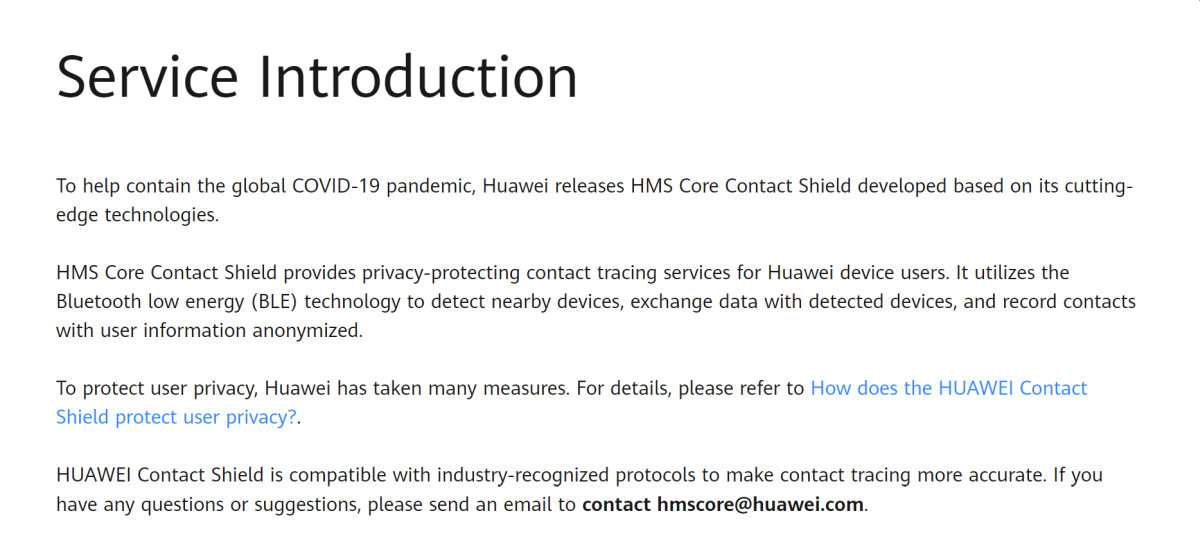Recently, we saw the launch of a collaborative effort between Google and Apple in a bid to utilise technology in the fight against COVID-19: the Apple-Google COVID-19 Exposure Notification API. However, the API is available with the latest version of Google Play—which means that most Huawei devices that were launched after the U.S. trade ban aren’t compatible with the API.
However, Huawei has now released its Contact Shield API as part of the 4.1.0.301 HMS Core update. First spotted by the folks over at XDA Developers, Huawei’s contact tracing API will help developers to provide “privacy-protecting contact tracing services for Huawei devices users” by using low energy Bluetooth (BLE) technology. Just like Google and Apple’s API, BLE tech will be used to exchange contact tracing data with nearby devices, with user information protected by anonymity.

When Google and Apple’s API was first announced, Google reportedly said that the framework would be made public so that companies could replicate the tracking system. However, Huawei has not confirmed if their API is related to Google/Apple’s API, despite the apparent similarities in the FAQ sections of both APIs.
Meanwhile, a spokesperson for Huawei has said that the API will comply with Decentralized Privacy-Preserving Proximity Tracing (DP-3T) protocol, and developers will need to sign an agreement with the Chinese company before they’re allowed to use the API for a public health app. Compliance to user privacy protection regulations will also be required.
Here are a few important points from Huawei’s FAQ section:
- Users can determine whether to enable Contact Shield, whether to upload anonymous identifiers to the cloud, and whether to obtain diagnosis results by themselves.
- Using anonymous identifiers will not record or store any personal information such as user locations. These identifiers will only be stored for 14 days.
- After a user uninstalls your app, the user’s historical data stored on the device will be deleted. A user can also manually delete all historical data.
- Only developers authorized by governments and strictly assessed by Huawei can use Contact Shield APIs to develop apps.
- Huawei will sign an additional service agreement stating the user privacy protection requirements with eligible developers.
What’s also interesting here is that Huawei says that the HMS Core Contact Shield will also be able to “interact” with iPhones and Android devices with Google Mobile Services (GMS), which is perhaps indicative that Contact Shield is based on the public framework, as mentioned. \
All Huawei devices that are running HMS Core SDK 4.1 and newer versions will support the service. This means that mobile devices like the Huawei Mate 30, Huawei P40, Huawei Mate Xs, and even phone from Honor will stand to benefit from Huawei’s new Contact Shield API.
To find out more, click here for the full FAQs on Huawei’s official developer site. Meanwhile, if you want to find out more about Google and Apple’s collaborative API, scroll down to the related reading section.








